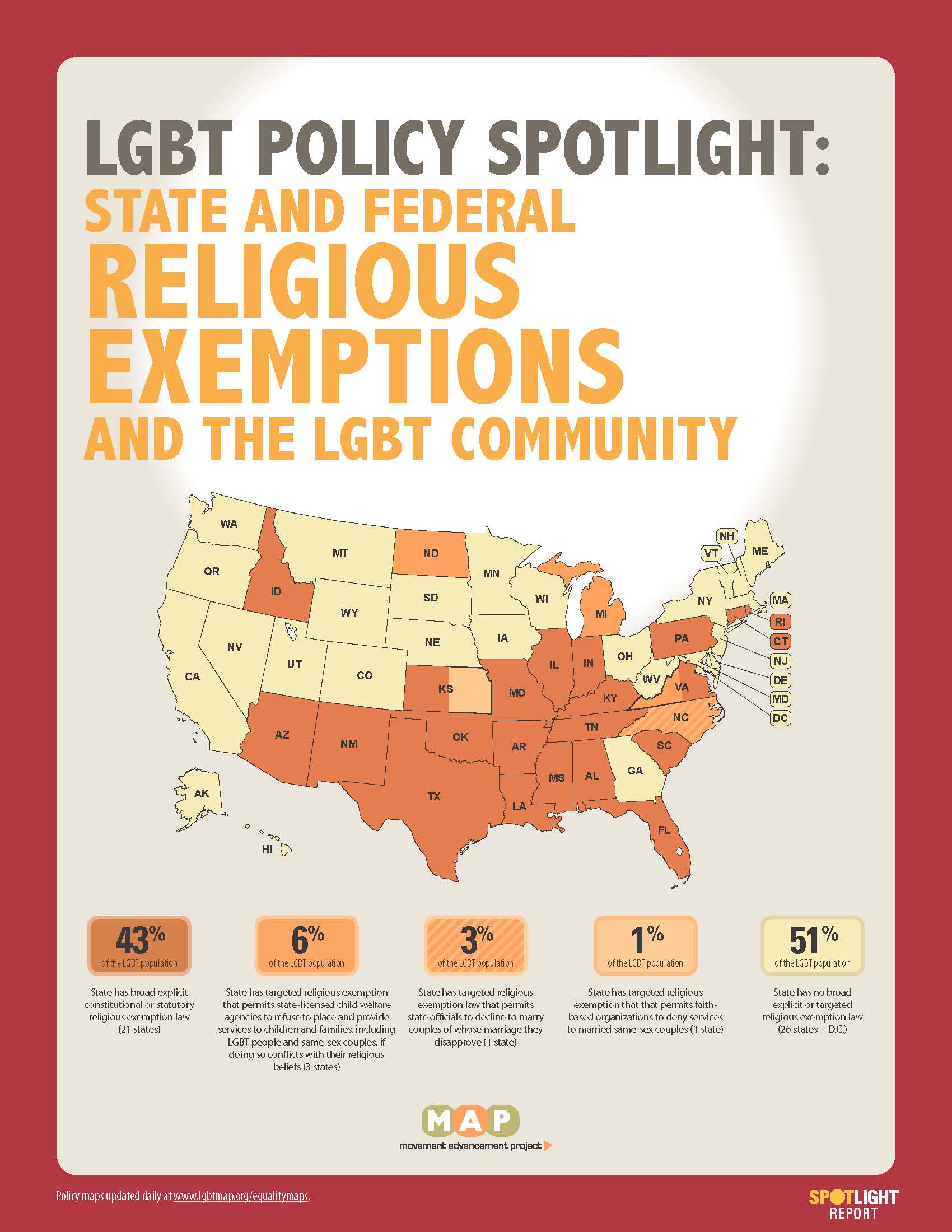The Bottom Line
LGBT Policy Spotlight: State and Federal Religious Exemptions and the LGBT Community examines how state and federal religious exemption laws—which expand the ways in which people and organizations can be exempt from laws and regulations that conflict with their religious beliefs—are being used to harm a broad range of people, interfere with law enforcement, and undermine the rule of law. The report brings a particular focus to the widespread implications religions exemption laws have for LGBT Americans. These laws have recently been used as a defense when businesses discriminate against or refuse service to LGBT customers and same-sex couples.
This report is part of an ongoing series that will provide in-depth analyses of laws and policies tracked at the Movement Advancement Project’s Equality Maps. The information in this report is current as of the date of publication; but the online maps are updated daily.
LGBT Policy Spotlight: State and Federal Religious ExemptionsDownload
Recommended citation:
Movement Advancement Project. September 2015.
LGBT Policy Spotlight: State and Federal Religious Exemptions. https://www.lgbtmap.org/policy-and-issue-analysis/policy-spotlight-rfra (date of access).


